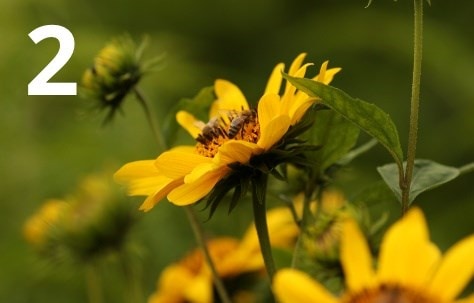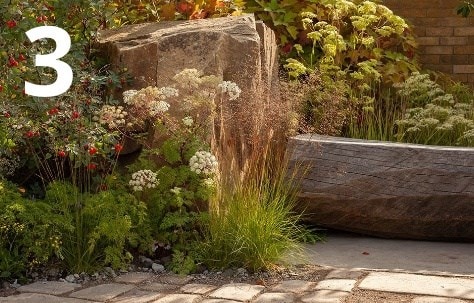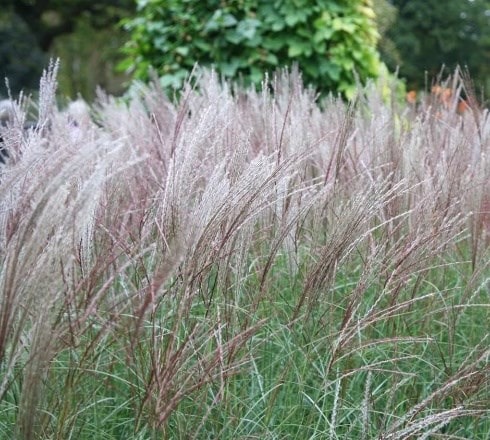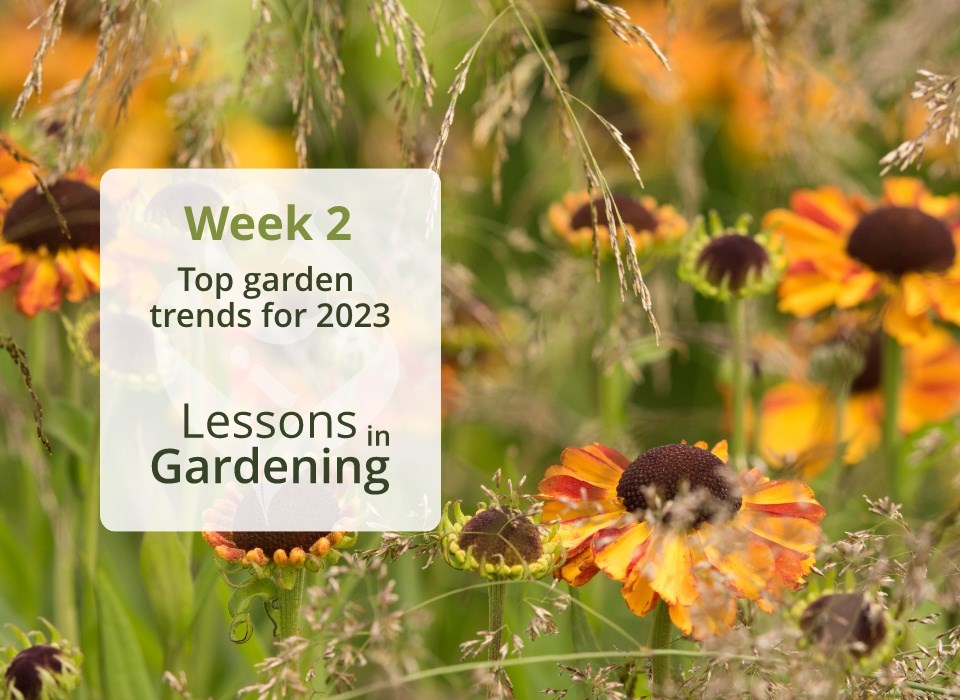THE REWILDING GARDEN

Increasingly we want to let a bit of the wild into our gardens. After all, what is a garden if not nature half tamed? Wild gardens can provide an inviting habitat for wildlife and at the same time a sanctuary to soothe our weary souls. There can be no nicer way to relax than sitting in your garden watching a bee bumble between nectar-rich flowers.
Transform even the smallest space into a thriving ecosystem, creating an area that's a haven for birds, animals and beneficial insects. Here's how:

Plant a variety of native plants to provide food and shelter for birds, bees and other creatures throughout the year. Dog roses, hazels, hollies, beech and blackthorn all make excellent hedges (or free-standing specimens), and they can be underplanted with cowslips, foxgloves, bluebells and violets. Also, if possible, leave the lawn uncut (or at least a section of it) and you may be surprised to see which wildflowers start to appear naturally - dandelions, yarrows and daisies are often some of the first to flower. Not only will this method cut down on labour-intensive mowing, but the longer grass will also make a wonderful habitat for a huge range of beneficial insects.

Encourage wildlife in. Keep birds coming back by hanging up some feeders and topping them up regularly. Birds such as blue tits, blackbirds and robins will eat garden pests, and song thrush, fieldflares and blackbirds will go for snails and slugs.
Create cosy hiding places for insects, lizards and frogs by making log piles and leaving leaf litter on the ground. Ladybirds, hoverflies, wasps (particularly parasitic species), ground beetles and lacewings are all renowned pest eaters.

Consider softening hard landscaping such as paving with interspersed planting. Lifting the odd paving slab and planting with creeping thyme, or other low growing alpines will soften the environment, improve water drainage and encourage more wildlife and pollinators in.
You can also green up vertical spaces with climbers, or even by adding hanging baskets. One of the best things you can do to rewild a space is to plant a tree. Not only will it add height and interest to your garden, it will also improve the air quality, encourage in the smaller songbirds such as robins and tits and even improve your soil quantity.

Ditch the chemicals and start companion planting
Avoid using any pesticides that are harmful to wildlife, but instead try 'companion planting' - a method where different plants will work together to help one another. For example, many aromatic plants (feverfew, lavender, salvias etc) act as natural insect repellents, while yarrow, fennel and catmint will all help attract beneficial predatory insects that will help control aphids, mealybugs, hoverflies and lacewings.
HOW TO: CREATE A WILDFLOWER MINI-MEADOW

Whether you've just a few pots to fill, a bare patch in the border, or have decided to take the plunge and convert your lawn, creating a mini-meadow is one of the best things that you can do for wildlife in your garden. For best results, grow your wildflowers in a sunny spot, with freely-draining soil that is relatively low in nutrients.
CROCUS TIP: PLANTING COMBINATION
This planting combination begins in May with the soft rich blue of Geranium himalayense 'Gravetye', named after the Sussex home of William Robinson, the famous Victorian garden writer and author of The Wild Garden. The book, revolutionary in its day, envisions a naturalistic approach to gardening. The cranesbill is perfect for ground cover and is happy in sun or dappled shade.
The mix comes into its own between June and September, when all four of the plants will be in bloom. Daucus carota 'Dara' is a pinky white cultivar of wild carrot, an umbellifer found in hedgerows and by the sides of fields. It's frothy sprays make a good foil for the bobbing dark red flowers of the Japanese burnet Sanguisorba tanna. The latter can thrive in sun or shade but is happiest in a sunny spot with moist soil. A striking point of interest is provided by the cornflower Echinacea purpurea with its large, purplish pink daisy-like flowers which are a magnet for bees and insects. The seed-heads can be left into the winter when they will attract birds.
WANT TO ADD A LITTLE EXTRA?

Extend the display late into the autumn and winter with swishy Chinese silver grass Miscanthus sinensis 'Kleine Silberspinne'.
Plants for rewilding
Now create your moodboard. This will inform your plant selection and keep you focussed on the overall garden style you want to achieve.
Further reading
How to create a wildlife-friendly garden

















